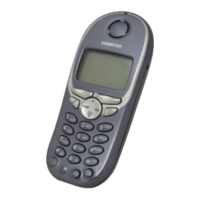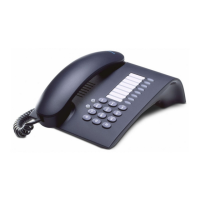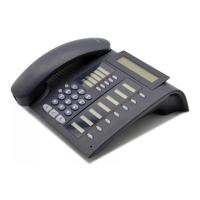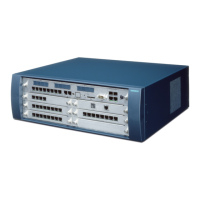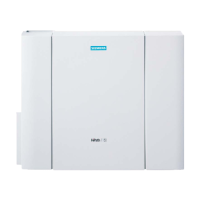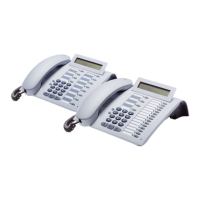
Do you have a question about the Siemens HiPath Series and is the answer not in the manual?
Provides critical information and warnings for safe and proper telephone operation, including environmental and accessory guidelines.
Explains compliance marks like CE and ISO 14001 certification, indicating adherence to EU guidelines and environmental standards.
Details the layout and key components of optiPoint 500 economy, basic, standard, and advance telephones.
Explains the manual's structure, symbols, and step-by-step guidance for operating the telephone.
Guides on how to access telephone functions interactively, via menus, or through programmed function keys.
Provides tips for faster dialing and managing busy lines using features like repertory dialing and callback.
Describes methods for answering calls using the handset or speakerphone and managing call volume.
Covers initiating calls using off-hook and on-hook dialing methods.
Details procedures for transferring calls, using variable call forwarding, and forwarding in the carrier network.
Explains how to store, answer, and manage callback requests for busy or unanswered calls.
Guides on saving and using speed-dial numbers and programming them onto telephone keys.
Covers adjusting ring volume, ring tone, and attention ring volume.
Details adjusting speakerphone acoustics, receiving volume, display angle, backlight, and contrast.
Instructions on how to change the language displayed on the telephone screen.
Explains how to accept specific calls for colleagues, reject calls, and use speakerphone.
Covers en-bloc dialing, using caller lists, speed-dial, internal directory, and LDAP database searches.
Instructions for accessing and managing messages in the telephone's mailbox.
Details on how to make loudspeaker announcements to colleagues.
Covers setting up hotline connections and reserving busy trunks for exclusive use.
Explains using a dialing aid connected via S0 bus or a/b port, and using the telephone as a dialing aid.
Guides on accepting waiting calls, placing calls on hold, and managing call waiting signals.
Details on parking calls, placing external calls on hold, and retrieving held calls.
Instructions for conducting multi-party conference calls, adding participants, and managing the conference.
Explains how to activate and use tone dialing signals for controlling external devices.
Procedure for activating ISDN services and features via network carrier trunks.
Covers call waiting (camp-on) and busy override functions when a destination cannot be reached.
Guides on activating and deactivating the night answer service for call forwarding.
Explains how to save frequently used functions or numbers onto programmable telephone keys.
Details the meaning of various LED indications for saved functions like call forwarding, mute, and headset.
Guides on saving multi-step operating procedures, including station numbers and dial pauses, to a single key.
Instructions for setting up single or recurring appointments for telephone reminders.
Covers checking and deleting saved timed reminders and how the system alerts the user.
Details how to view call charges for the current or last conducted call, including free calls.
Explains how to display and print chargeable calls for other telephones.
Guides on assigning external calls to specific projects using account codes.
Guides on activating and deactivating ringer cutoff and do not disturb functions.
Details on preventing caller ID display and silently monitoring calls.
Instructions on activating telephone monitoring for a room.
Procedure for identifying anonymous callers by tracing calls.
Guides on locking the telephone to prevent unauthorized use and managing PINs.
Explains how to lock and unlock other telephones remotely.
Instructions for saving a personal identification number (PIN) for accessing telephone functions.
Covers creating, sending, displaying, deleting, and answering text and advisory messages.
Explains how to display the number of external waiting calls and understand overload indications.
Guides on allowing others to use your telephone for outgoing calls.
Procedure for changing your telephone's call number to another available telephone.
Details on indications for received faxes or messages on the answering machine.
Covers the system-wide cancellation procedure for various activated telephone functions.
Explains how to activate functions like DND or call forwarding on other telephones via associated service.
Guides on accessing system functions remotely using Direct Inward System Access (DISA).
Instructions for using ISDN functions via code dialing (keypad dialing).
Details on controlling connected computers, programs, and telephone data services.
Covers turning relays on/off and how sensors trigger phone functions.
Instructions for contacting people via paging equipment.
Details on simple and enhanced paging equipment operation.
Guides on activating and deactivating group call, hunt groups, and team functions.
Instructions on how to accept calls for other team members from your telephone.
Covers activating and deactivating ringing groups for signaling calls to multiple internal phones.
Details on belonging to UCD groups, logging on/off, and managing availability status.
Guides on requesting work time and managing night service for UCD.
Instructions on how to display the number of calls waiting in the UCD queue.
Explains the meaning of LED indications on trunk keys and their basic usage.
Guides on answering and initiating calls using trunk keys.
Details on using trunk keys to place calls on hold and retrieve them.
Instructions on managing multiple simultaneous calls using trunk keys.
Guides on activating and deactivating call forwarding for specific lines using trunk keys.
Explains the meaning of LED indications on DSS keys for team members.
Guides on answering calls using DSS keys and calling team members directly.
Details on transferring calls in progress and accepting calls for other team members.
Instructions for joining or leaving group calls, particularly for executive/secretary teams.
Guides on activating audible signaling for calls directed to an executive.
Procedure to test all telephone functions, including LEDs, display, and ringer.
Explains how to check the programming of functions on specific telephone keys.
Guides on leaving or joining hunt groups and managing group calls within a LAN environment.
Instructions for activating/deactivating call forwarding for telephones in other HiPath 3000 systems.
Covers defining other HiPath 3000 telephones as night answer points within the LAN.
Guides on activating and deactivating ringing groups for external telephones via LAN.
Explains how to control relays in other HiPath 3000 systems via LAN.
Instructions for activating the door opener function for other HiPath 3000 systems via LAN.
Methods for labeling telephone keys using strips, computer software, or online tools.
Guides on applying self-adhesive labels for important call numbers to the telephone.
Information on accessing operating instructions online in PDF or HTML format.
Overview of available accessories like key modules, headsets, and adapters to customize the telephone.
Guidelines for cleaning the telephone using appropriate materials to prevent damage.
Covers common issues like unresponsive keys, no ringing, and inability to dial external numbers.
Explains common error messages on the screen and their possible causes and responses.
Provides guidance on contacting service personnel or customer service for persistent issues.
Describes compliance requirements with Federal Communications Commission (FCC) Rules.
Details testing and limits for Class A digital devices regarding radio frequency energy.
Covers certification under Part 68 for connection to the telephone network.
Information on hearing-aid compatibility requirements for telephones.
Notices required by Industry Canada Terminal Attachment Program concerning device connection.
